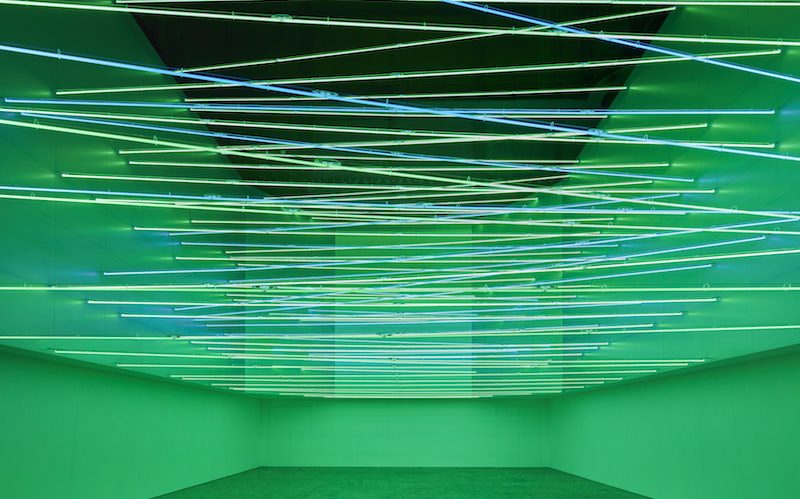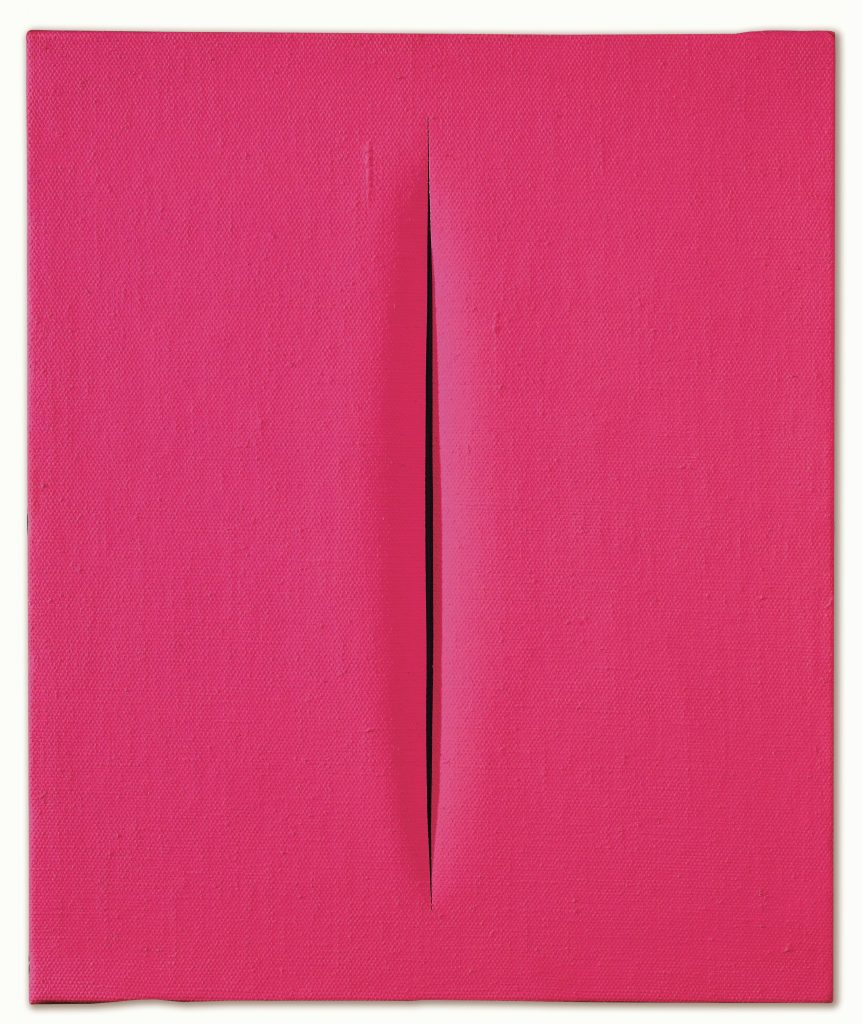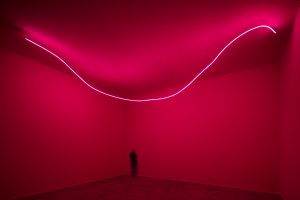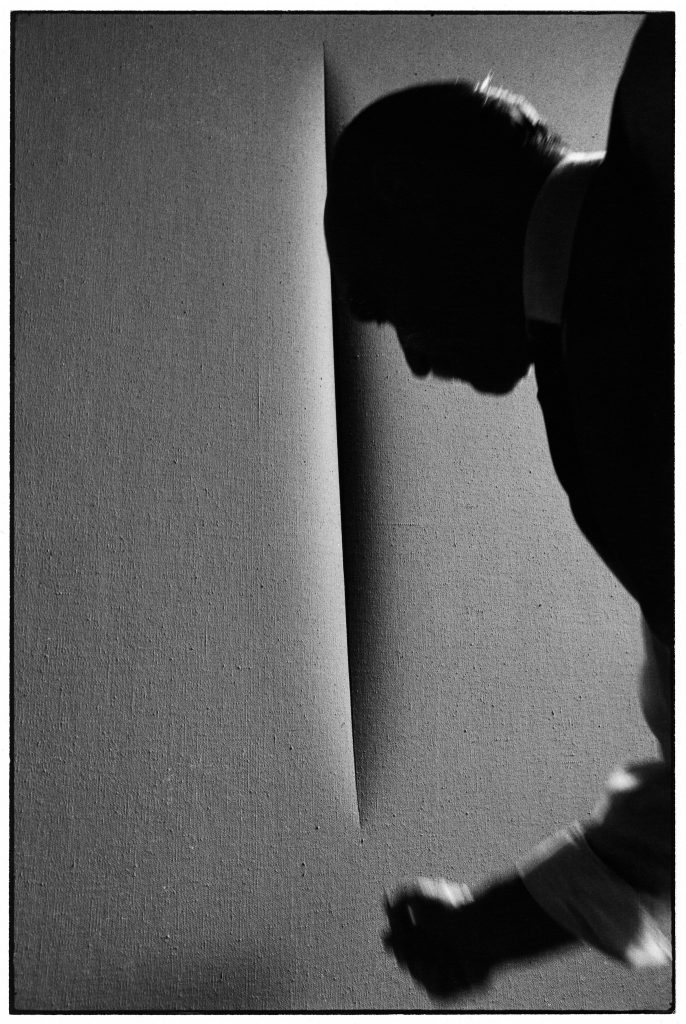
Space-giving Art
In his work Lucio Fontana pursues the fundamental artistic idea of merging architecture, painting and sculpture. In his quest for a new special art from that overcomes the limitations of the two-dimensional canvas, Fontana proves to be one of the most experimental and innovative artists of the 20th century – and one that will form and inspire younger generations of artists. Two of his artworks that redefined the concept of space in art are up for sale at Dorotheum’s Contemporary Art auction.


Cutting Edge Artist
Fontana created the first perforated canvases in 1949; a decade later he took to slashing them: brutal incisions applied to mostly monochrome canvases with a sharp knife.
“I wouldn’t define my work as ‘painting’,” said Lucio Fontana in an interview with Daniele Palazzoli in 1967. “The works created as early as 1946, I never called them paintings. From the onset, I thought of them as ‘Concetti Spaziali ’, spacial con cepts, because to me a work of art is defined by an idea, not the materials used to express it. The canvas served, and still does, as a means to document an idea. My current works are variations on my two key visual work concepts: the hole and the incision. At a time when people were talking of planes – the planes of the surface, the depth and so forth – my perforation of the canvas was a radical gesture that breached the spacial confines of the surface. It said: Now we are free to do whatever we want. The space occupied by a painting can’t be confined merely to the canvas, it must be expanded to include the surrounding space as well.”
Merging of Dimensions

Fontana’s brilliant move aims to unite real space with imagined space. His incisions are intuitive and precise like a surgical procedure, characterised by the swiftness and finesse with which they were applied. Prior to the incision, the surface was empty, unmarked space, the immaculacy of which is merely amplified by the audaciousness of´the cut. He transforms the surface to a new spacial state by penetrating the very structure of the closed space. The penetration of the surface makes the fabric, the physical exterior of the canvas, sensuously cognisable, while the light dives into the crevice and disappears to open a new space underneath the surface, challenging the imagination of the viewer. The dual nature of the canvas is thus accentuated – it constitutes a physical carrier of something tangible, yet at the same time conveys the presence of something hidden. Characteristically, Fontana establishes the dialectics between physical materiality and immateriality by transcending in one swoop both the illusionism of traditional painting as well as the flat canvas as a hallmark of modernity.
„The space occupied by a painting can’t be confined merely to the canvas, it must be expanded to include the surrounding space as well.“ – Lucio Fontana

The immeasurability of space
Fontana created the works on offer back in 1964/65 and 1968. They distinctly represent the urgency and clarity of his later works. Initially, he mostly applied incisions orthogonally and in a rather rhythmic order to polygon-shaped canvases. In these later works, however, the technique has been reduced to one vertical slash through the central axis of a quadratic canvas. The luminous colour tones – the radiantly bright pink as well as the saturated green – draw a straight line to the lesser known but highly visionary “environments” he also created. He experimented with fluorescent tubes, neon and ultraviolet light to manipulate space and visual perception. A prime example of these experiments is “Amiente spaziale con neon”, a work created by Fontana for Stedelijk Museum in Amsterdam in 1967 and later also exhibited at Van Abbe Museum Eindhoven. An S-shaped red neon tube passes through an exhibition room fully draped in red fabric. For his “Fonti di energia, soffitto di neon per Italia 61”, Torino, 1961, Fontana installed a horizontal mesh of blue and green neon tubes across a high, blackceilinged exhibition room. The “environments”, as the slashed canvases, aspire to achieve a unity of perception, while also establishing, through interaction of colour, light, lines and objects, the sheer immeasurability of space.
AUCTION
Contemporary Art I
May 16th 2018, 18:00
Palais Dorotheum Wien
Information:
Patricia Pálffy and Alessandro Rizzi, Contemporary Art specialists
Photo above:
Lucio Fontana, Fonti di energia, soffitto al neon per Italia 61, Torino, 1961/2017
installation view at Pirelli HangarBicocca, Milan, 2017
Courtesy Pirelli HangarBicocca, Milan
© Fondazione Lucio Fontana, Photo: Agostino Osio











